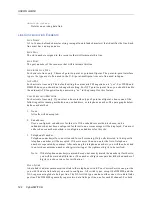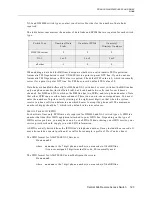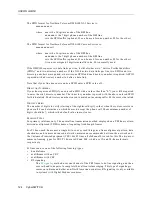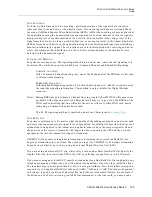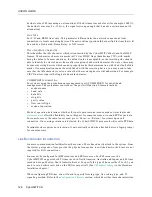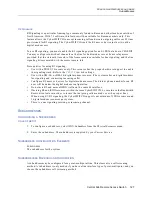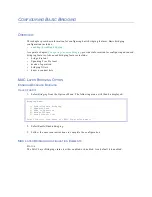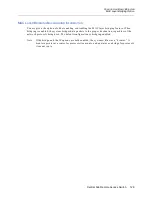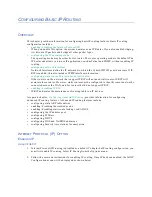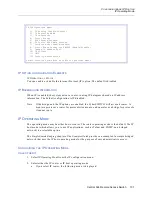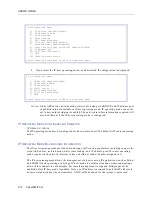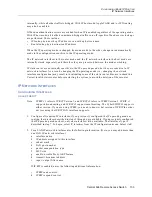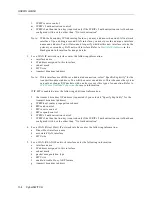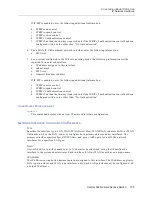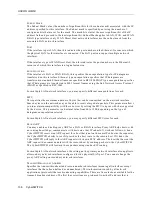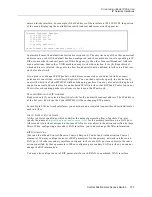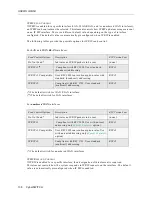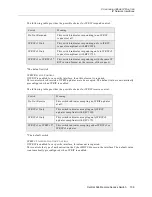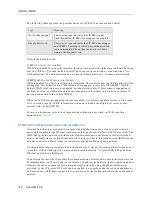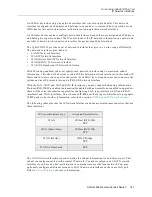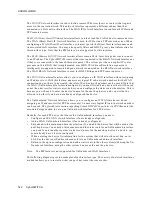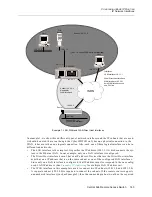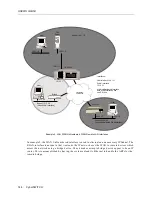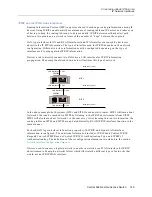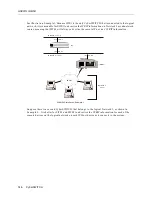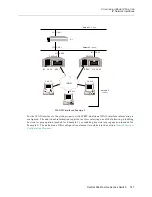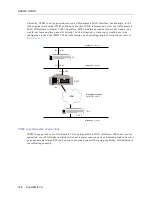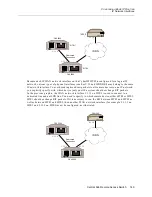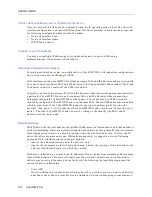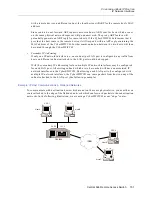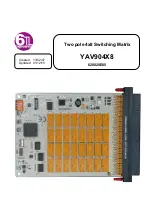
USER’S GUIDE
136 CyberSWITCH
S
UBNET
M
ASK
The Subnet Mask value (the number of significant bits for the subnet mask) associated with the IP
address specified for this interface. The Subnet mask is specified by entering the number of
contiguous bits that are set for the mask. The mask bits start at the most significant bit of the IP
address field and proceed to the least significant bit. Subnet Mask applies to LAN, WAN, and WAN
RLAN type interfaces only. WAN Direct Host network interfaces use the subnet mask from the
associated LAN network interface.
P
ORT
If the interface type is LAN, then this indicates the port number on the Ethernet-2 resource to which
the physical LAN for this interface is connected. The LAN port can support multiple network
interfaces.
If the interface type is WAN Direct Host, then this indicates the port number on the Ethernet-2
resource of which this interface is a logical extension.
E
NCAPSULATION
If the interface is LAN or WAN RLAN, this specifies the encapsulation type for IP datagrams
transferred on this interface. Ethernet type encapsulation specifies that IP datagrams are
transferred in standard Ethernet frames as specified in RFC-894. SNAP type encapsulation specifies
that IP datagrams are transferred in 802.3 format frames using the Sub Network Access Protocol
(SNAP) as specified in RFC-1042.
For multiple LAN network interfaces, you may specify different encapsulations for each.
MTU
This specifies the maximum number of bytes that can be transmitted on the network interface.
Some devices on the network may not be able to receive large data packets. This parameter allows
you to maintain compatibility with these devices by setting the MTU to agree with that supported
by the device. This parameter is a decimal value from 60 to 1500, depending on the type of
datagram encapsulation selected.
For multiple LAN network interfaces, you may specify different MTU sizes for each.
P
ROXY
ARP
You may enable or disable proxy ARP for a LAN or RLAN interface. Proxy ARP helps hosts, with
no routing knowledge, communicate with hosts on other IP subnets. It works as follows: when a
CyberSWITCH receives an ARP request for a host that is not on the same IP subnet as the requester,
the CyberSWITCH checks to see if it provides the best route to the remote host. If it does, the
CyberSWITCH will reply to this ARP request with its own MAC address. The host that has sent the
ARP request then communicates with the remote host by sending packets to the CyberSWITCH.
The CyberSWITCH will forward those packets using standard IP routing.
For multiple LAN network interfaces, the setting on the primary network interface also applies to
all secondary network interfaces configured for the physical LAN port. You cannot change the
proxy ARP setting on secondary network interfaces.
T
RANSMIT
B
ROADCAST
A
DDRESS
Specifies the transmit broadcast address on numbered interfaces (meaning all interfaces except
interfaces that have been defined as unnumbered). This information is used by all network
applications (protocols) that use broadcasting capabilities. There are five selections available for the
transmit broadcast address. The first four selections are produced from the IP address that is

